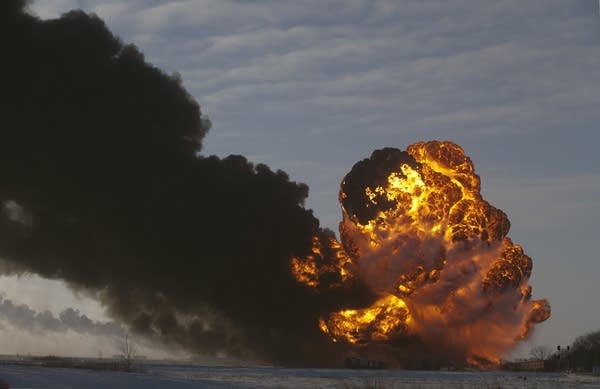NTSB: Safety improved since Casselton train accident, but more work needed

A fireball went up at the site of an oil train derailment Dec 30, 2013, in Casselton, N.D.
Bruce Crummy | AP 2013
Go Deeper.
Create an account or log in to save stories.
Like this?
Thanks for liking this story! We have added it to a list of your favorite stories.


